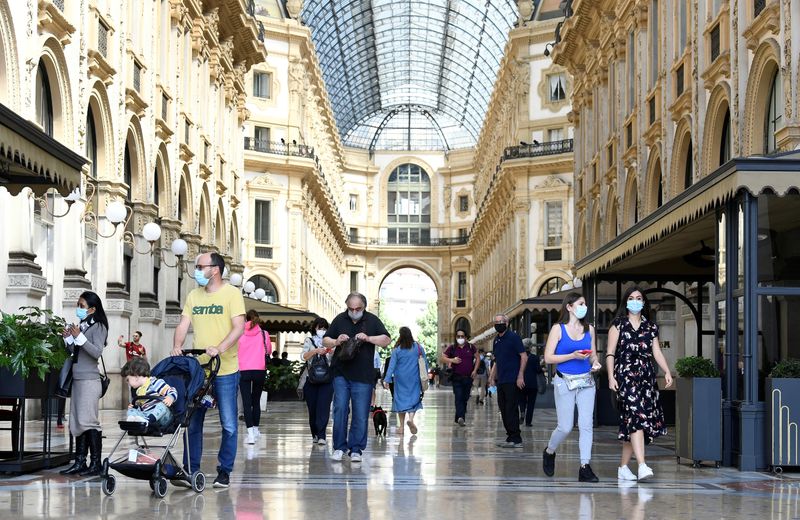This post was originally published on this site
https://i-invdn-com.akamaized.net/trkd-images/LYNXMPEG4Q0VY_L.jpg
MILAN (Reuters) – As European luxury shopping capitals from Paris to Milan slowly emerge from coronavirus lockdowns, stores are reopening to a trickle of customers, and virtually no tourists.
The absence of big-spending travellers, particularly from China, the Middle East and the United States, is a major drag on sales as, depending on the brand, they provide between 35% and 55% of revenues in Europe.
With a global recession looming, and fears of a second wave of infections, there seems little prospect of a big influx of tourists soon – or of local buyers making up the shortfall.
In Milan’s Galleria Vittorio Emanuele II, the city’s famed shopping arcade, masked sales clerks stood idly in empty Prada (OTC:PRDSY), Chanel and Louis Vuitton stores on Monday, a week after non-essential stores were allowed to reopen. Six of the eight restaurants lining the 19th century mall had opted to stay shut.
“It’s quiet. I think it will be like this for weeks to come – hopefully not months,” said a shop assistant at the Gucci stand in the upscale Rinascente department store.
Renato Borghi, head of fashion trade at Italian business lobby Confcommercio, said a straw poll of around 100 retailers in Milan showed an average 30% year-on-year drop in sales in the first week since shops there reopened on May 18.
But he added that for luxury stores in the city centre things were likely to have been worse since they rely so much on tourists and also because many locals are still working from home.
A shop assistant at a high-end shoe store, which he asked not to identify because he is not allowed to disclose sales data, said that on Saturday he sold four pair of shoes compared to 10 in normal times. A store manager at a jeweller in Rome said first-week sales were down almost 70% on the year before.
Business appeared brisker in Paris, where stores have been open for just over two weeks. On Monday afternoon, 17 people queued outside the flagship Louis Vuitton store on the Champs Elysees, with white floor markings to keep them spaced out.
Louis Vuitton’s owner LVMH (PA:LVMH) did not reply to a request for comment on how sales had gone since the reopening.
Rival Kering (PA:PRTP), which owns Gucci, said initial signs in France were encouraging. “Traffic in stores has been higher than we expected and more customers are buying,” it said.
Q2 CARNAGE
The generally cautious mood in Europe is in contrast with the pent-up demand for luxury goods in China and South Korea, where stores began reopening in March. There, labels including Hermes (PA:HRMS), Louis Vuitton and Dior have reported double-digit sales growth, even amid price hikes by some brands.
Despite that, consultancy Bain expects global sales of high-end clothing, handbags, jewellery and cosmetics to fall between 50% and 60% in the second quarter.
Brands are adopting different strategies. Some, like Chanel and Louis Vuitton, have raised prices to protect margins.
Others, like Ferragamo (MI:SFER) and Burberry (L:BRBY), have written down the value of stock they will no longer sell at full price.
Gucci’s star designer Alessandro Michele, announcing this week he will move to just two, seasonless, fashion shows a year from five, said he wanted garments to stay in shops for longer.
Luca Solca, a luxury goods analyst at Bernstein, expects the “mother of all end-of-season’s sales” to offload excess stock.
In a sign shoppers are becoming more cautious as economies falter, the European Commission forecasts savings will reach 19% of households’ income in the euro area this year – the highest since the start of the monetary union – from 13% in 2019.
With stores in London, another major European shopping hub, not due to reopen until June 15, “40-50% of (luxury) sales have vanished in Europe and they won’t come back for a while,” said Jefferies (NYSE:JEF) analyst Flavio Cereda.
“Young people and the middle class – the engines of growth for the sector – have less money to spend. The core wealthy customers are coming back, but that’s not enough.”


